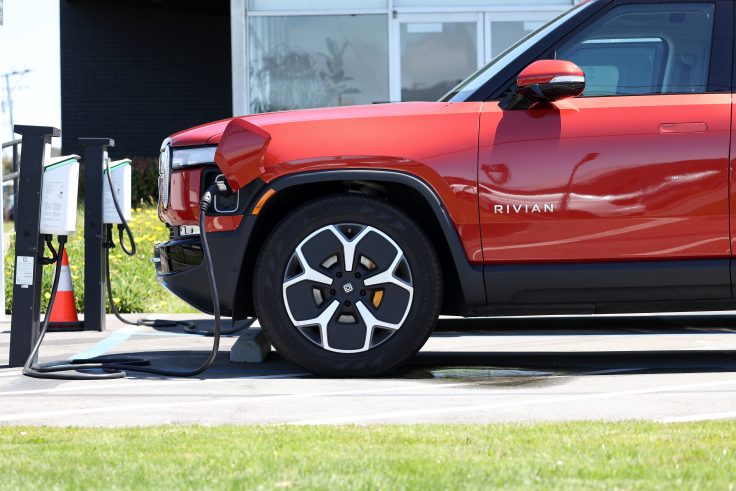America's system of roadside guardrails may not be able to handle heavy electric vehicles, according to preliminary crash test results of a study released Wednesday.
Researchers at the University of Nebraska crashed an over 7,000-pound electric pickup truck, a 2022 Rivian R1T, into a guardrail at 60 miles per hour, resulting in the car tearing straight through the barrier. A separate test saw a Tesla Model 3, which weighs about 4,000 pounds, pass through a guardrail with a little more resistance, lifting the barrier and passing underneath before stopping behind it.
While EVs offer superior protection for their occupants in crashes with other vehicles, safety officials say, some pieces of roadway infrastructure may not be able to accommodate them. The metal guardrails are often located on bridges and roadsides overlooking cliffs or bodies of water to prevent cars from going off the road. Due to the weight of the batteries that power them, EVs tend to be between 20 and 50 percent heavier than gas-powered cars, according to the Associated Press. Heavier EVs especially, such as the Rivian truck in the study, may be too much for the present barriers, which are supposed to stop vehicles that weigh 5,000 pounds at most.
"Guardrails are kind of a safety feature of last resort," Michael Brooks, director of the nonprofit Center for Auto Safety, told the AP. "I think what you’re seeing here is the real concern with EVs—their weight. There are a lot of new vehicles in this larger-size range coming out in that 7,000-pound range. And that’s a concern."
Cody Stolle, assistant director of the Midwest Roadside Safety Facility located at the university, told the outlet that the compatibility between the EVs and guardrails is poor.
"Right now, electric vehicles are at or around 10 percent of new vehicles sold, so we have some time," Stolle said. "But as EVs continue to be sold and become more popular, this will become a more prevalent problem. There is some urgency to address this."
Stolle compared the present difficulties with EVs to the challenge brought by the increasing popularity of heavier SUVs and pickup trucks in the 1990s, a change to which guardrail technologies had to adapt.
"So, here we are trying to do the same thing again: Adapt to the changing makeup of vehicles on the road," Stolle told the AP.
The adequacy of roadside safety mechanisms is not the only difficulty facing the ongoing transition to EVs, which President Joe Biden's administration is attempting to incentivize. Charging stations for the vehicles are often out of order or crowded, which Energy Secretary Jennifer Granholm experienced over the summer when her staff used a gas-powered car to reserve a charger for her during an EV road trip, angering other EV drivers.
